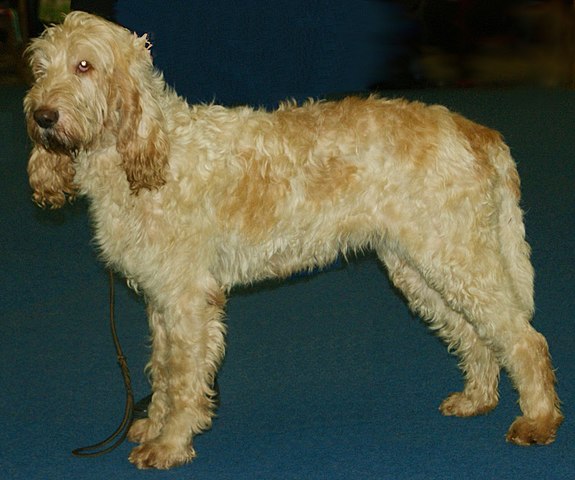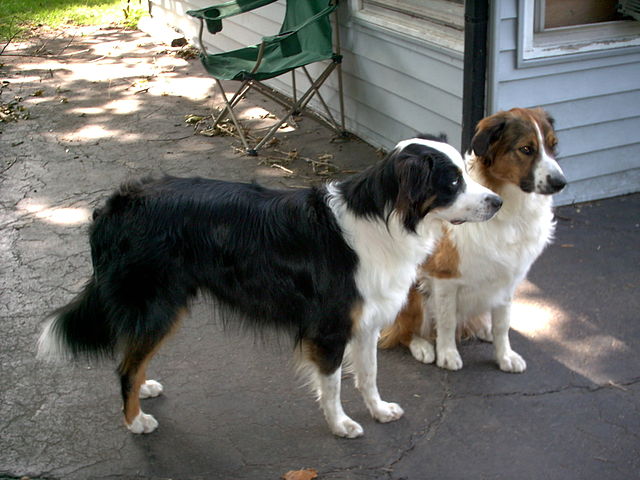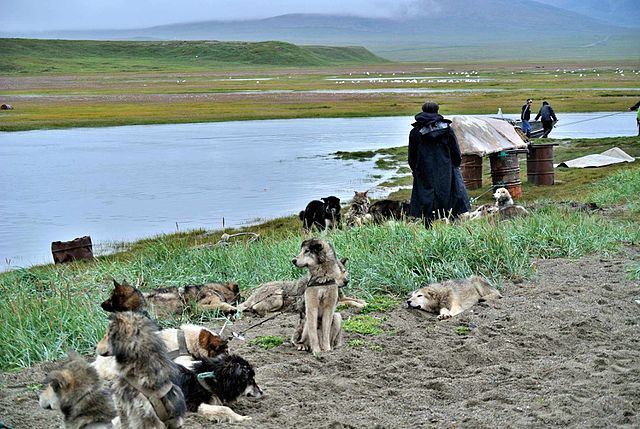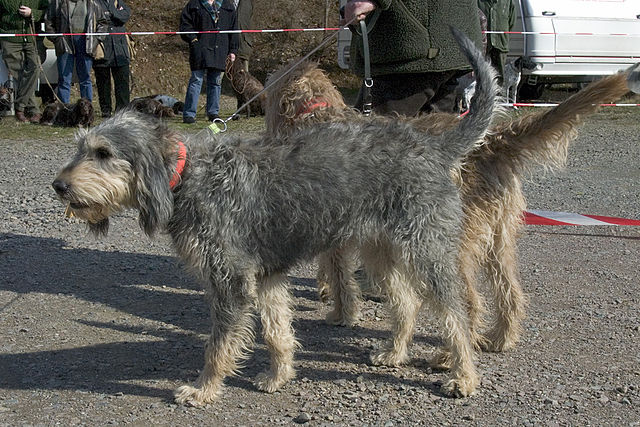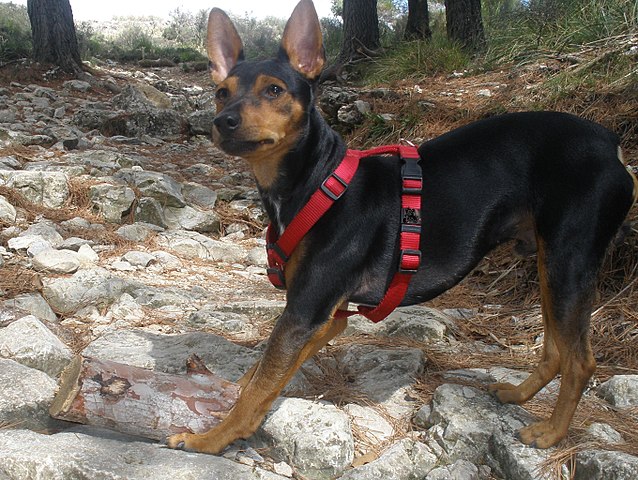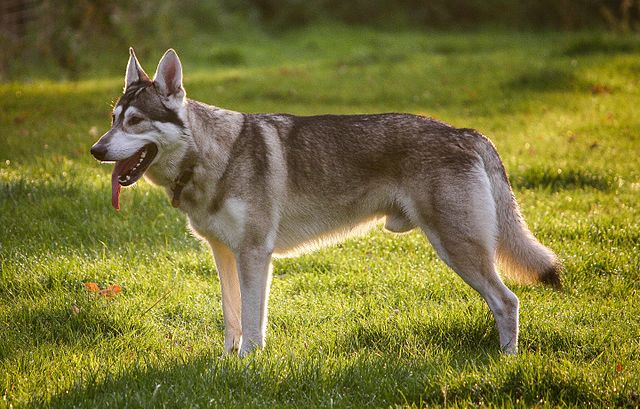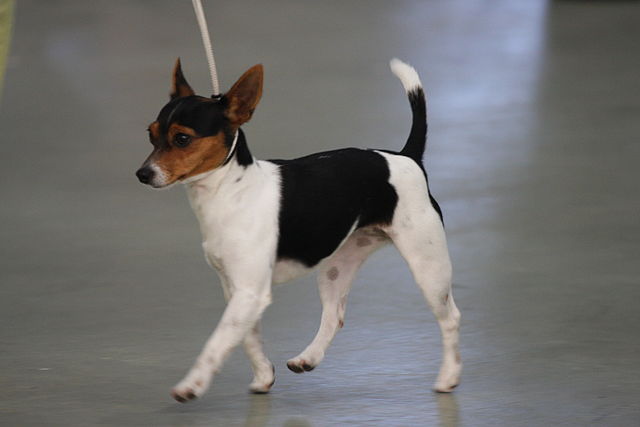The Bouvier des Ardennes is a Belgian breed that was originally developed as a cattle drover, but was also used for other tasks as well such as tracking large game. During both World Wars, they were even used as poachers’ dogs. This is a tough and steadfast breed that, unfortunately, became more rare as farms slowly became more sparse in their original region of the Ardennes. Although developed in the 1600’s, the breed had to be rescued from the brink of extinction in the 1980’s. Today it is recognized by the UKC and abroad although is still fairly rare in every part of the world.
The Ardennes is a medium-sized breed that is highly adaptable to many different jobs and environments, provided that he is brought up as a working dog in a home that has space for him to move and work. This is a dog that definitely needs a job, and without one he can be difficult to live with! Luckily he is quite smart and easy to train, which means that getting him started on a job shouldn’t be too difficult. Herding is a prime example of a job he is still well-suited for although he is enthusiastic to do almost any job assigned whether it be agility, flyball or competitive obedience. It is very important to mention that this breed means business, and if he feels like his owner/trainer isn’t competent he may try to take over or challenge authority.
The Bouvier des Ardennes does enjoy spending time with his owners and can develop a very deep bond. In fact, he will absolutely take the role of guard dog if he feels like his family is in danger! In addition to defending “his people” when he feels it necessary, he will also serve as a general watch dog and announce when anyone comes onto the property. In fact, he can be somewhat of a vocal dog in general. Take note that despite his independent nature, when left to his own devices for long stretches of time he is prone to developing separation anxiety and can become a problematic barker. He shouldn’t be owned by those who work long hours.
The scruffy appearance of the Ardennes is due to his coarse, wiry coat which served as protection from the harsh climate while he worked. Medium in length, dense, double and weatherproof – any evidence of the coat being trimmed is an immediate disqualification in the show ring. He must have a mustache and beard about 2 inches in length, and the coat can be any solid color other than white. The standard notes that the dog should look rugged and have “a rather forbidding appearance”, even noting that dogs should be judged naturally and without being stacked. The Ardennes should have a heavy bone that makes him look bigger than he actually is. Fully erect ears are preferred, although semi-pricked or rose ears are acceptable. They should never be cropped. The tail can be long or short, either naturally or docked.
The Bouvier des Ardenees tends to thrive with other household dogs as long as he was raised with them. Socialize him early and keep him safely contained in a fenced yard so he doesn’t wander and come into contact with poorly socialized dogs that could sour his experience. Cats and even livestock are also normally a-ok! Smaller pocket pets might be seen as a tasty snack unless kept safely caged, so don’t take the hamster out when he’s in the room! The Ardennes does well in a household with children and can become the child’s best friend – although like other herding breeds can be prone to nipping at heels in an attempt to herd the kid. In general, he is also amiable to meeting new people although he likes to observe them for a bit before rushing to say hi.
Ardennes are high energy herding dogs that must have regular exercise in order to keep them from becoming destructive and/or hyperactive in the home. They need owners that are just as active as they are that are willing to provide lots of outdoor activities. This hard-working athlete benefits from more than just a simple walk around the block, and does best with a more intense and varied workout. As long as the dog is conditioned to the task, he can do almost anything! This is a very healthy breed that can accompany his owner on high-impact hikes, swimming sessions, and other similar activities.
Bouvier des Ardennes are playful and happy in the home as long as everything is fairly consistent. They thrive on routine and can become somewhat nervous when new situations arise or a big change occurs. For this reason, it can take them a long time to be ok if they need to be rehomed. Socialization is extremely important while in puppyhood so the dog can get used to encountering new and different objects, people and places! This is vital to early brain development in all dogs, but even more so in breeds that are predisposed to finding change difficult. Undersocialized Ardennes are more prone to aggression or extreme fear.
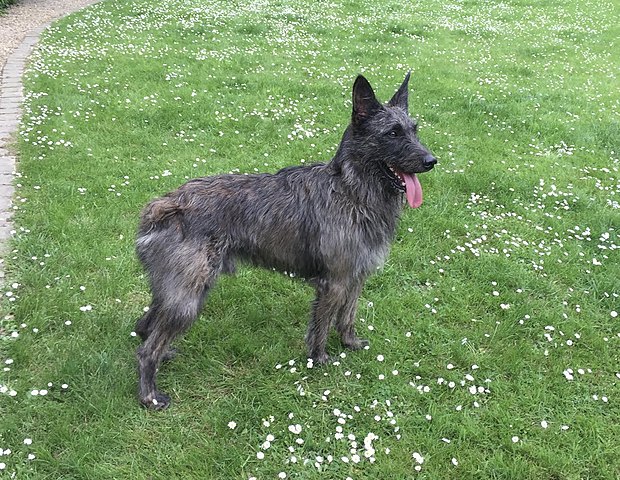
Photo By Carberetmichbini

